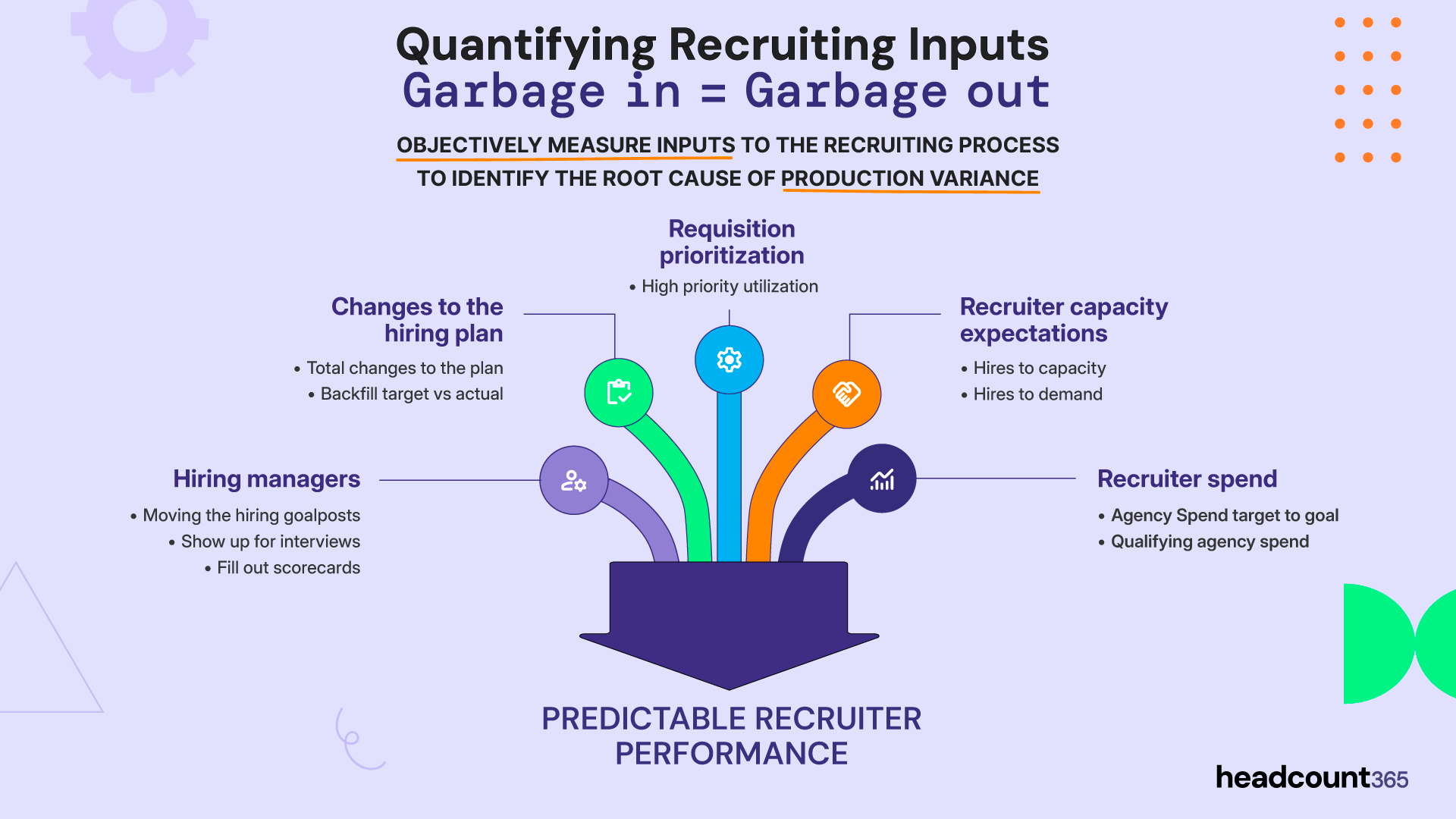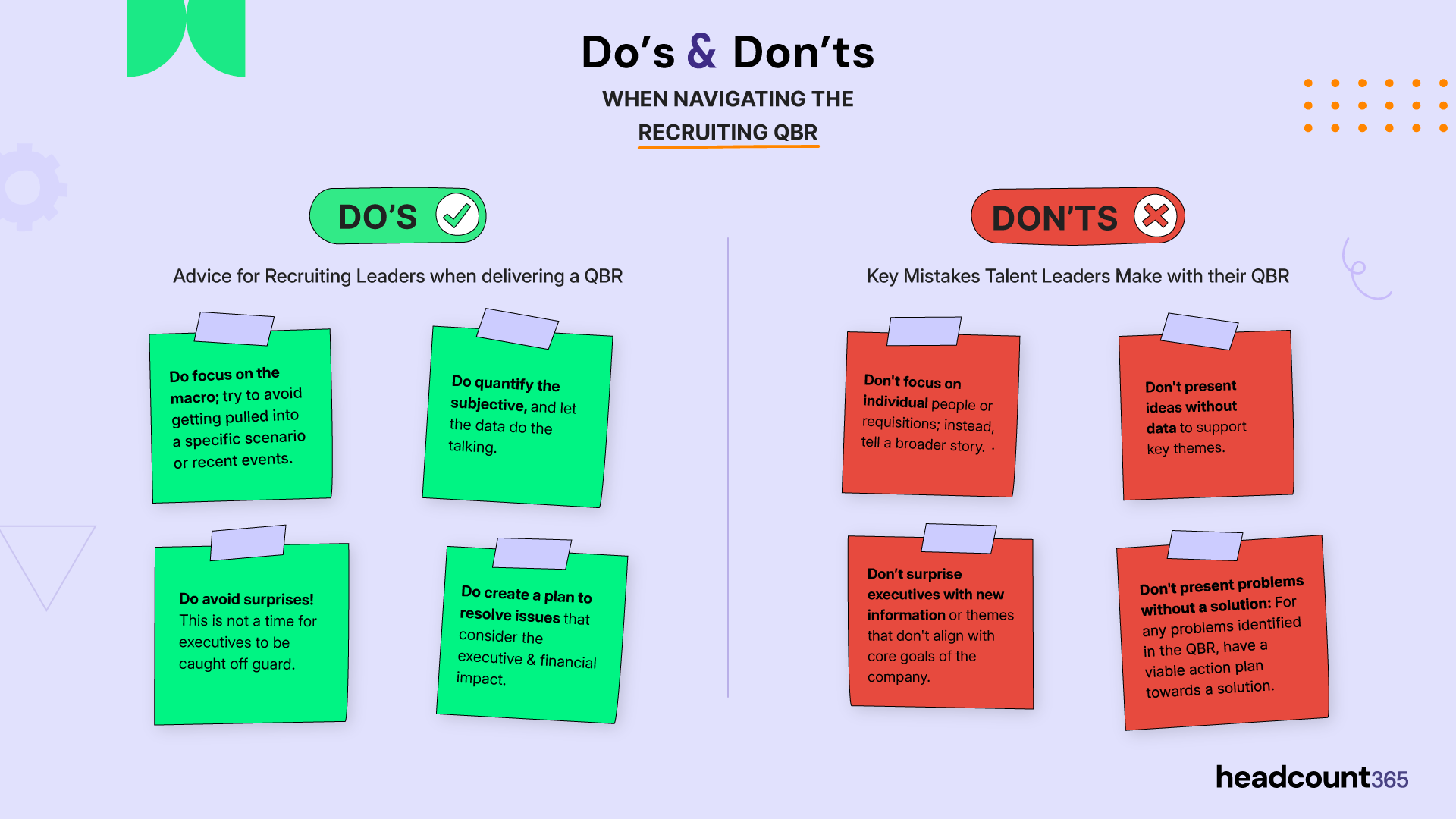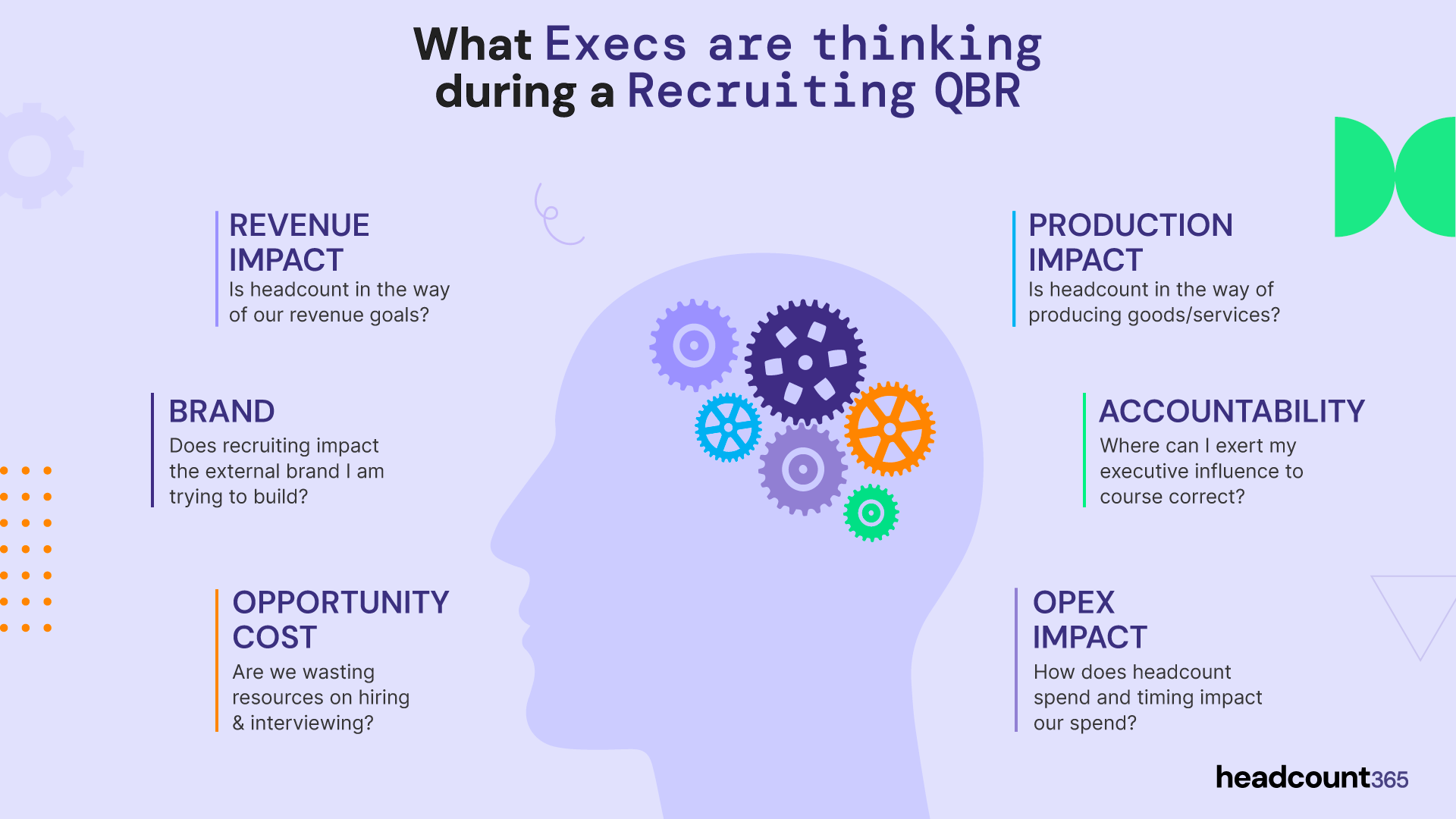A Recruiting Leader’s Guide to the QBR (Quarterly Business Review)
Watch founder Eric Guidice review the Recruiting QBR in a podcast with Joe Atkinson, Founder of Purpl, a TA resource library that helps recruiters advance their career
Table of Contents
A Recruiting QBR is the most underrated tool in Talent Acquisition
A Recruiting Quarterly Business Review is a Recruiting Leader’s chance to get out of the day to day of recruiting, and talk about the impact of the service of recruiting. When done right executives perceive Talent Acquisition as a strategic business partner vs a Service function.
The Recruiting QBR Defined
What is the Recruiting QBR
A QBR, or quarterly business review is a structured retrospective of Recruiting performance that’s associated with company outcomes, highlighting how the service performed against expectations, and calling our ways to improve the service.
The Purpose of the Recruiting QBR
The Recruiting QBR is a subsection of a larger executive meeting where the recruiting leader has the space and attention to discuss the service of recruiting in the big picture. Every great TA leader uses their QBR to unify executives around a shared understanding of hiring performance and elevate their team’s influence inside the business.
1. Strategic Alignment Show how hiring performance maps directly to business outcomes, from revenue goals to product milestones.
2. Operational Review Analyze what worked, what didn’t, and how process changes are shaping results.
3. Stakeholder Accountability Clarify the inputs owned by each group: hiring managers’ responsiveness, TA’s throughput, and Finance’s planning accuracy.
4. Commitment to Future Performance Build trust by forecasting outcomes using clear, auditable data instead of anecdotal explanations.
Rather than debate the outcome of an individual role, candidate, or process, you get the opportunity to talk about the entire recruiting service, unifying teams behind it’s importance. In doing so, you drive increased accountability for the inputs of each stakeholder, build trust with your recruiters as a leader, and drive towards a more predictable recruiting outcome for the future.
The structure of a high-impact Recruiting QBR
You have 15 minutes to tell the story of your recruiting department’s performance. Ironically, you get less if you’ve met the expectations of the business because they have “bigger fish to fry” To make the most of the time we recommend the following structure.
How did recruiting perform last quarter?
Did the Recruiting team meet the demand of the business?
If yes, highlight the following.
Top Performers - When you win, this is the time to build a case for those who helped.
Critical Roles Filled - highlight your impact through their lens. Executives don’t care if you had a really good close. They care that you filled their role for them.
Other Success - Highlighting other wins around efficiency, budget performance or project completion builds your brand as a TA leader
If No, your focus should be on recognizing the impact, defining the reasons why, and convince the team of your action plan to get back on track.
Headcount365’s Talent leader toolkit consolidates these narratives into easy to download reports, so you can easily articulate recruiting’s performance to goal without having to dig through spreadsheet workbooks.
What are the reasons for that performance?
When things aren’t going well its important to understand why.
Recruiting Capacity vs Demand - Did you have enough recruiters to meet the demand?
Headcount365’s capacity/demand reporting maps the history of what was asked of recruiting vs capacity to tell the full story of how volume & changes impacted the recruiting team’s ability to get the job done.
Hiring Manager Performance - Did hiring managers block the hiring process?
Headcount365’s Hiring Manager Scorecard tracks the hiring manager behaviors that block hiring & consolidate them into a singular report that helps drive accountability for bad actors
Recruiting Performance - Did recruiters meet the expectations?
Budget Performance - Did the company spend more on recruiting costs or employee salaries than originally budget?
What the recruiting team doing about it?
Creating & delivering an action plan to help executives understand how to correct any variance in performance vs expectations is critical to walking away from the Recruiting QBR with credibility about correcting performance in the future.
Maximizing Executive Exposure During the Recruiting QBR
QBRs are not audits, they are narratives of progress. Your 10-15 minutes of presentation time is the culmination of critical prep work and narrative building
Preparing your Recruiting Business Review
Unify data sources: Pull headcount data from ATS, HRIS, and Finance into one “single source of truth.” (Skip this step if using headcount365
Map the Trends: Compare this quarter’s outcomes against last quarter and original plan targets. Progress is critical context to add to performance data.
Add context: Interview hiring managers and recruiters to explain anomalies and learnings. If using headcount365, review the activity feed to explain gaps in performance
Pre-align with stakeholders: Review the deck with Finance and HRBP partners before presenting.
Design for executives: Use visuals, variance charts, and summaries. avoid dense tables and text. In many cases, Recruiting and HR share the stage to present the total lifecycle of hiring & it’s impact on the business. While each company has a unique overlap of these services, executives often treat them as one, so it’s important that you organize your information into a singular story. This singular Recruiting and HR story can be thought of as a “Talent QBR” vs just a “Recruiting QBR”.
Maximize executive engagement in your Talent QBR
The People and Recruiting teams seldomly get the attention and focus of the entire Executive team, so it’s important that we use this time wisely. It’s easy to get pulled into a conversation about something that’s right now, but leveraging this time as an executive advisor builds credibility not only as a Subject Matter Expert (SME), but as a leader who can navigate the executive environment.
Communicating Impact with Clarity
Now that you have the executive’s attention, it’s important you communicate in a way that get’s the desired outcome. As recruiters and recruiting leaders we do this with interviewing all the time. When we ask a candidate their biggest failure, we don’t want to know about the failure, we want to know about how they learned from it, and used it to prevent future mistakes.
The QBR is a very similar situation. If hiring managers are impacting the funnel, executives want to know the impact to the business and how they can help, so you must translate that message for them so they can help you.
Identifying Variance Builds Trust
Variance is the main concern of every executive, especially as their results might be contingent on the recruiting service. The best recruiting leaders, with the most successful QBRs can easily identify if the hiring variance was a product of the hiring funnel, recruiter performance, business changes, or hiring manager inputs. Not only does build trust for the executive accountability you are championing, it is the foundation for an action plan to correct action.
Turning Insight Into Action
After you’ve explained what’s happened and why, it’s now time for the most critical part. What are you going to do about it? Better yet, What are WE going to do about it as a business?
Creating an action plan is arguably the whole reason the executive team gave you the time in the first place. While they certainly want to be successful, they are simultaneously thinking, “What does this mean for me?”
So let’s talk action plans. Remember those 4 key sources of variance I covered above? It’s now time to explain what you’re doing about them. Every action plan should have inputs from stakeholders, with a focus of corrective action, and a forecast of the output. Easier said, what are we doing, who’s doing it, why are they doing it, and what happens when its done? Below is an overview of the common problem/solutions that often arise in the Talent QBR.
How Headcount365 Transforms the Recruiting QBR
So why is the CEO of headcount365 writing about Talent/Recruiting QBRs? It’s because I lived the pain of doing them, and had to create a solution to revolutionize this process.
I was done with putting all of this information with spreadsheets, overusing Recruiting Operations , FP&A, and HRBP hours just to produce mediocre data. I’ve dealt with the “he said/she said” arguments about the things that are easily measurable. I’ve left the QBR defeated, or undervalued and I knew if I unlocked the data from the headcount plan I could change all of it.
3 ways headcount365 revolutionizes the Recruiting QBR
Proprietary QBR data, harvested from headcount
Tracking hiring manager actions that block recruiting performance, or the history of a requisitions across multiple systems are a few examples of how a unified dataset can tell a better story during your QBR
An AI Powered Activity feed of all requisition activity
Every action that happens to any headcount is captured and logged. Not lost in email. Not in a slack. Not in an old spreadsheet version of the headcount plan.
AI-Powered Context for all performance or budget variance
Unified budget reporting captures the financial impact of recruiting performance on salaries, total opex and revenue.
Headcount365 is built to create a seamless QBR experience for Recruiting Leaders, surfacing data that helps tell a better story and deliver better results.







